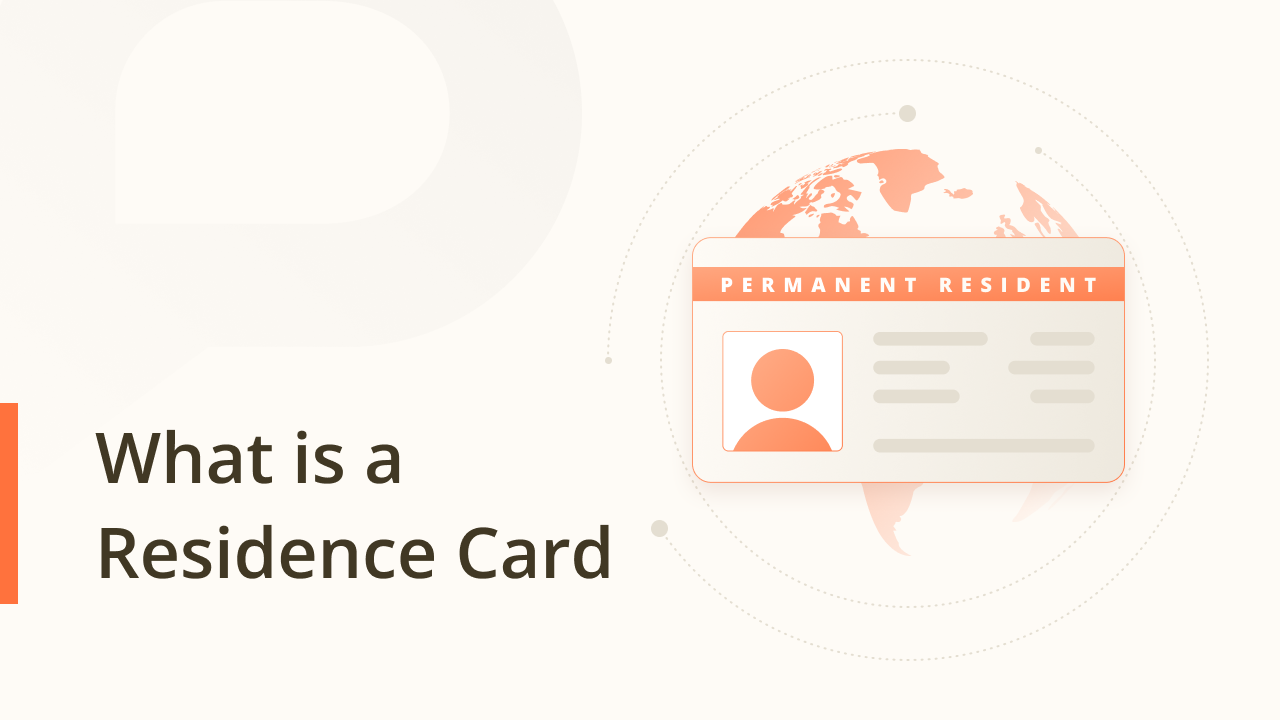Spending too much on recruitment, payroll or global HR?
We help you find the Best Providers at the lowest cost.
Key Takeaways
- Residence cards have different names in different countries.
- The cards show proof of permanent resident status.
- These documents include biometrics and are used as ID and travel cards.
- You can usually apply for a residence card from within or outside the country.
If you want to be able to live and work in a country you’re not a citizen of; you’ll likely need to obtain a residence card. Residence cards and their related rules and regulations differ between countries, but what remains similar is that these cards are much desired. The process to apply for a card to work in the US, for example, is incredibly backed up. Over one million citizens from India alone are waiting for their applications to be processed. The UK is working on making its process more efficient and is changing from physical cards to digital records in 2025. So just what is a residence card, and how do you obtain one? That’s what we’re about to find out.
What is a Residence Card?
There are a lot of names that define essentially the same thing, including a residence card, a residence permit, or even a green card. These documents are permits that show a person is allowed to live in another country. Are they different from visas? That depends on the country. Some countries define them as a type of visa, while others categorize these documents differently. The important thing to remember is that a residence card is both proof and permission for you to reside in a foreign country.
In the USA, for example, the residence card is known far and wide as a “green card” due to its historical green color. This card is called a Permanent Resident Card and can be issued for immediate family members of US citizens, an extended family wanting to immigrate there, or for employment in the US.
In the UK, so-called “biometric residence cards” are no longer in use. They have been phased out and replaced with the biometric residence permit (BRP) instead.
In Canada, this document is still called a permanent resident card and is used as both identification and a travel document by Canadian permanent residents.
What is Permanent Residence?
A residence card is simply a document that shows you have permanent resident status in a foreign country. But what does this mean, exactly?
“Permanent resident” is a legal status just like “citizen” or “alien.” This status is granted to people who have fulfilled the conditions to be allowed to live in a country on an unlimited or permanent basis. While a visa is normally granted for a limited period, permanent residency means there is no limit on how long a person can stay in the country.
However, permanent resident status is seen in many countries as a step toward citizenship. Some countries require permanent residents to pursue citizenship and obtain it within a set period, or they may have their permanent resident status revoked. Likewise, many countries require permanent residents to live in the country (for example, not fewer than six months per year) to maintain their status.
Obtaining a Residence Card
The process for obtaining permanent resident status and receiving a residence card is different in every country. However, most countries require that you prove your identity, meet the criteria for living in their country, and don’t have a criminal record.
For the US, green cards can be granted to relatives of US citizens or people eligible to work in the US. While the process to obtain this permit is usually time-consuming, it can be reduced to these simple steps:
- Ensure your eligibility.
- Have a sponsor file an immigration petition on your behalf with the USCIS.
- File a green card application with the USCIS.
- Have your biometric information (fingerprints, face scan) collected.
- Undergo an interview.
- Receive a decision.
To get a German settlement permit, you will have to have lived in Germany on a temporary residence permit for at least two years. However, this depends on whether you’re applying as a German university graduate, skilled worker, EU Blue Card holder, or a German family member. You’ll have to:
- Prove that you have skills, training, or education in Germany or are considered valuable.
- Prove language qualifications (CEFR B1 Level in German).
- Pass a “Living in Germany” test to show knowledge of the country, its systems, and its culture.
- Show that you have been living in Germany for an adequate period on a temporary residence permit.
- Apply to your local foreigners’ authority.
As you can see, the qualifications and procedures for these two examples are very different. This is the case for all countries so you’ll need to look closely at the rules and regulations for residence cards of the country where you want to live.
A Residence Card is Proof of Permanent Residency
The residence card of a country, no matter what specific name it has, is a document used for identification and travel purposes. It shows that you have permission to live in that country permanently which usually means you can work, pay taxes, and otherwise live your life there very much like full citizens do.
FAQ:
What is the difference between a residence card and a green card?
“Residence card” is a general term for any document issued by a government that shows proof of permission to reside in that country. A “green card” is a nickname known around the world for this type of permit in the US. The official name for this document, however, is the Permanent Resident Card.
Can you apply for a residence card from inside the country?
Laws vary, but in most cases, this is possible. If you have already been living in a country on the correct visa, you may be eligible to apply for permanent resident status. Normally, there are channels for applying from both within and outside of the country.


